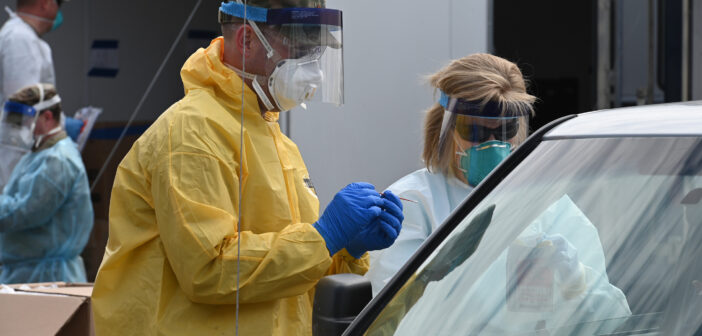The State of Illinois opened 11 different community-based COVID-19 testing sites recently. The sites are available for all. As of the end of May, Illinois transitioned from Phase 2 into Phase 3, meaning infection rates are stabilizing and/or declining. Prior transition into Phase 2 allowed for less strict social distancing and non-essential retail store curbside pickup and delivery.
Phase 3 to Phase 4
- Manufacturing, offices, retail, barbershops and salons can reopen to the public with capacity and other limits and safety precautions.
- Gatherings limited to 10 people or fewer are allowed.
- Face coverings and social distancing are the norm.
There are two more phases after Phase 3: Phase 4 (Revitalization) and Phase 5 (Illinois Restored). In order to advance to Phase 4, testing must be available to everyone regardless of symptoms.
“No appointment, doctor referral or insurance is needed at state-operated drive-thru sites and
testing is available at no cost to the individual,” according to the Illinois Department of Public Health (IDPH).
Moreover, the IDPH advises all protest participants to receive testing for COVID-19, especially if people did not wear masks. Illinois Governor J. B. Pritzker is concerned about an increase in positive COVID-19 cases following protests across the state.
Test sites can screen over 6,000 people a day. There are no restrictions on who can receive a test. The IDPH recommends people visit a testing site five to seven days after participating in protests or when symptoms appear.
“The virus has been found to spread between people up to a couple days before people start
showing symptoms,” according to the IDPH. “Because of this, the number of people an infected person could unknowingly expose can be exponential.”
Currently, there are about 6.8 million confirmed cases of COVID-19 worldwide. Roughly 1.9 million of those cases are in the U.S. and about 127,000 in the State of Illinois. In addition, global deaths have reached around 363,000, almost a third of which occurred in the U.S. and almost 6,000 in Illinois.
Phase 4 to Phase 5
As infection rate decreases across the state, Illinois may transition into Phase 4. However, further progression to Phase 5 cannot occur without one of the following:
- A vaccine.
- An effective and widely available treatment.
- The elimination of new cases over a sustained period of time through herd immunity or other factors.
All locations open for testing in Illinois can be found here.
Editor’s note: The numbers for this article are up to date as of June 6 at 3:26 p.m.

